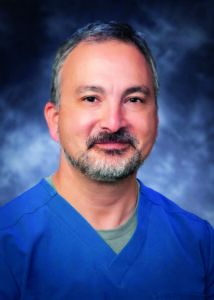
A vascular surgeon’s value includes far more than direct revenues from procedures performed, said SVS member Robert Tahara, MD, recently. He told surgeons to remember not only these direct revenues, but also the help a surgeon provides other specialties in the hospital, as well as legal savings from “near misses—rarely considered and certainly rarely acknowledged.”
The total will add up to considerably more than the direct revenues usually cited, he told attendees at the 2023 Society for Vascular Surgery (SVS) Vascular Annual Meeting (VAM). His presentation was part of the SVS Community Practice Section’s special educational session, “Recognizing, Enhancing and Promoting the Value of the Vascular Surgeon.”
The presentation covered a variety of financial topics, including whether to get a master of business administration degree, a surgeon’s ancillary value, incorporating the use of advanced practice providers and more.
The SVS for many years has sought to determine a vascular surgeon’s true value to his or her institution, Tahara said. An SVS Valuation Work Group produced “The Value of the Modern Vascular Surgeon to the Healthcare System,” report, which includes many of the details he planned to discuss. Tahara recommended surgeons read the report, which was published in February 2021 (visit vascular.org/PowellReport).
In terms of revenues, “Direct revenue is usually the only number physicians ever talk about,” he said. However, indirect (or enabling) revenue, from helping other specialties, and “near-miss” revenue, also are important.
The indirect revenue is that derived “from what we enable other non-vascular services to keep in the institution,” which can lead to increases in the case mix index (CMI). A higher CMI value indicates the hospital has treated more complex, resource-intensive cases, and the hospital may be reimbursed at a higher rate for such cases. “The CMI bump in indirect revenue is poorly accounted for and highly variable,” he said. In analyzing his work at his own facility, his work “added $650,000 a year.”
Tahara also highlighted the “near-miss value, the amount of money that we just saved that hospital by scrubbing in and over-sewing that big rip in the aorta or iliac. I get about one a year,” he said. In one such case, he said, he determined his work saved $300,000 in institutional legal fees, $100,000 in legal fees for him, and $130,000 for the patient.
With wrongful death settlements averaging $1 million, attorneys estimated that because of this patient’s age, had the “save” not occurred, a settlement in this case would have been $5 million instead.
“This is not a trivial amount of money and never gets accounted for. Your ‘near-miss value’ is never acknowledged, but the value is substantial,” Tahara said.
He recommended all surgeons log every near-miss, to assist when building data packages for compensation negotiations. “At least once a year you save one of these patients,” he told attendees.
CMI and near-miss contributions nearly double a surgeon’s financial value, Tahara said. “Do your homework before negotiating with your hospital about anything,” he told the crowd.
He summarized a vascular surgeon’s financial value: the direct revenue of $886,000; enabling revenue of $640,000; the CMI bump of $650,000; and the total from saved near-miss cases ($450,000 in legal fees plus approximately $1 million for a wrongful death settlement totaling $1.45 million). This brings a vascular surgeon’s full-time equivalent value to more than $3.62 million. “It adds up to almost double what’s quoted in the literature,” he said.
“It is critically important that the value that a vascular surgeon brings to an institution or facility is not unrecognized,” said Robert Molnar, MD, chair of the SVS Community Practice Section. “Vascular surgeons are the hub of the wheel, and we provide the essential base needed for any hospital system to offer multispecialty care.”
Registered VAM attendees can view the section’s session, held from 1:30–3 p.m. EDT on Friday, June 16, at vascular.org/OnlinePlanner23.












